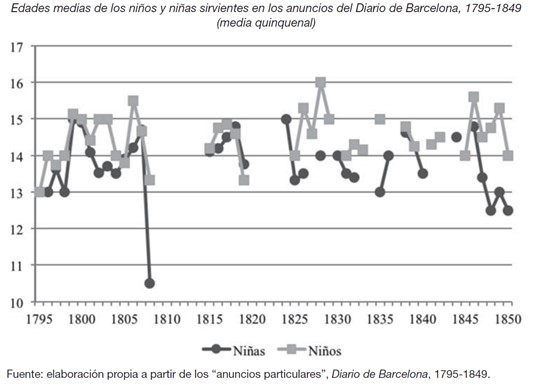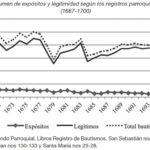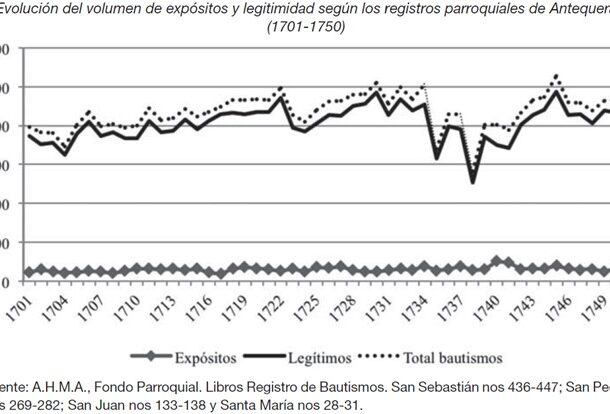
The parish registers of Antequera, shown in the graph provided by the author, show how the number of foundlings in Antequera at the end of the 17th century only decreased. However, this decrease was directly related to the epidemic crisis of 1679 which altered the demography and life cycles, lowering the nuptiality and, consequently, the birth rate. The research reveals that in the year with the highest number of baptisms, 1676, legitimate children accounted for 89%, while illegitimate children constituted 11%. On the other hand, in the year in which the fewest baptisms took place, 1684, foundlings accounted for 14%, an increase of 3%. Thus, the rate of abandonment was inversely proportional to the number of births. Finally, the fin-de-siècle crisis did not lead to an increase in the abandonment rate as families needed more useful hands to boost their economy.
Collection: Graphics
Project: 3. Rural world and urban world in the formation of the European identity., 4. Family, daily life and social inequality in Europe.
Chronology: XVII
Scope: Secondary Education, Baccalaureate, University
Resource type: Graph
Format: Line chart
Source: León Vegas, M. (2015). "Un estudio de caso sobre abandono infantil en la Andalucía Moderna: los expósitos de la inclusa antequerana", en Revista de Demografía Histórica, XXXIII, 1, p. 120.
Language: Spanish
Date: 2015
Owner: Pablo Ballesta Fernández (Modernalia)
Copyright: ©Revista de Demografía Histórica ©Milagros León Vegas
Abstract: Graph showing the total number of births, legitimate children and foundlings according to the parish registers of Antequera
Image
Tags






